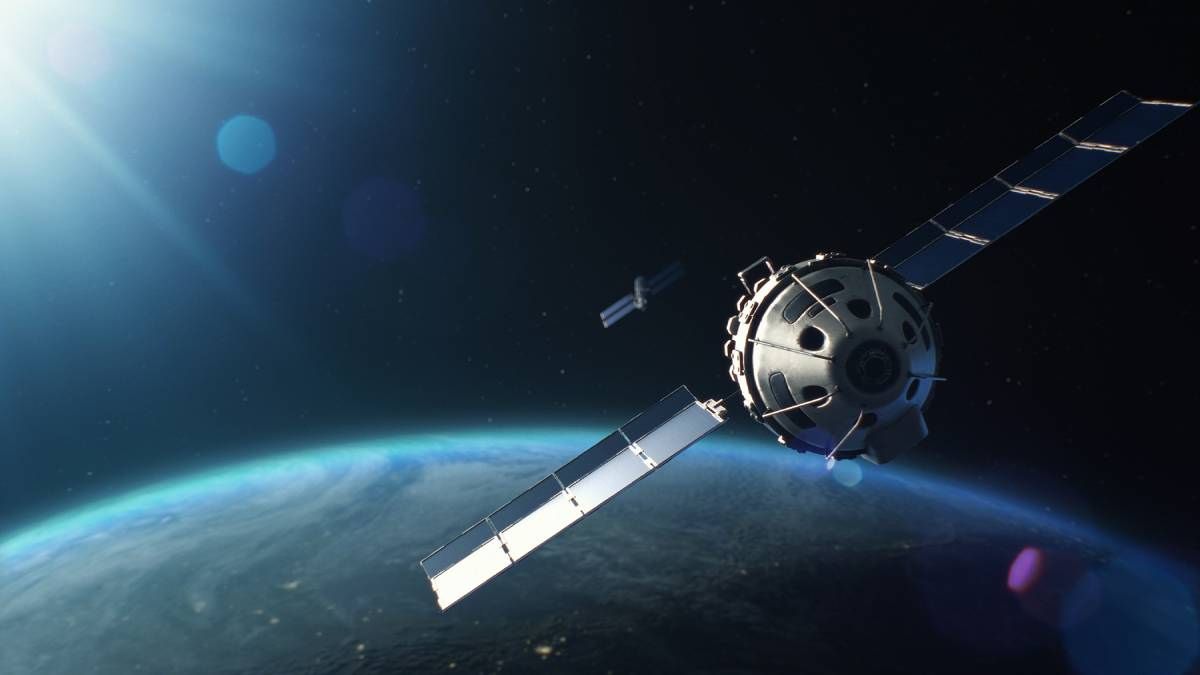
Constellations spoke with Al Tadros, Chief Technology Officer at Redwire, about how artificial intelligence (AI) can enhance Space Domain Awareness (SDA). With the ability to train AI on the norms of satellite movements and identifying foreign objects, it’s more important than ever to ensure data fidelity in AI algorithms.
Machine Vision and Algorithms in Orbit
“[AI] has the promise of extending the performance and capability of control systems, machine vision and robotics across domains,” said Tadros, and compared it to other machine vision capabilities that are already widespread. “Machine vision is all around us here on earth. Facial recognition, self-driving cars, even Clear access at TSA,” he said. “These functions can be put into space.”
But using AI for SDA isn’t just about getting good imagery. “We don’t want to just get resolved imagery,” said Tadros. “We don’t want to just get pictures and we don’t want to just do [recovery point objective]. We want to actually extract characterization and intent.” Using AI in this way would require giving algorithms a deeper understanding of how satellites normally operate. Algorithms would need to be able to recognize what normal operations look like and be able to flag an anomalous operation.
“Those kinds of activities can start to be extracted with a trained model, and trained on what satellites look like,” said Tadros. Models could also be trained to recognize what normal satellite activities look like, such as how they approach foreign objects. In a good training model, these things can help an algorithm identify an object and determine its intent in approaching you. “AI could help advance the autonomy of deciding as [an object] gets closer whether you maneuver or not.”
Avoiding Collisions and Developing Autonomy
In the world of SDA, AI could also optimize satellite orbits to reduce the risk of collisions and improve overall operational efficiency. This includes abilities like autonomous maneuvering and autonomous navigations, especially in larger constellations, where tracking several satellites in relation to each other can be a significant obstacle. “This kind of heavy compute is something that AI promises to advance,” Tadros said.
Beyond autonomous operations, AI can also handle future planning. Many satellite orbits are crowded, and not just with satellites and satellite debris. “We have thousands of man-made objects being launched. There’s also something like forty tons of natural micrometeorite debris entering Earth’s atmosphere every day,” said Tadros. “We need to understand when a micrometeorite impacts our satellites.”
Determining the source of threats and damage to satellites is imperative. But it’s important to remember that AI is non-deterministic, and the data and conclusions received from it can depend greatly on many factors that often shift around quickly. “AI is best at using the information that it has and making decisions that we need to have a guardrail for,” said Tadros. Even the best AI will need a supervisory level of fault detection, isolation and recovery—something to keep it from doing anything permanently harmful. “What if a decision, although it’s best intentioned with the best information, is still misguided?” asked Tadros.
Building Good AI on Good Data
All artificial intelligence is built on data that comes from somewhere. The challenge in developing reliable AI is often in ensuring data provenance and fidelity. “This is a common topic around AI,” said Tadros. “What was it trained on? When it hallucinates, how do you know?”
The challenge is often in sorting through massive data sets. In SDA, however, “you don’t have the billions and trillions of data sets that you might have off of, say, social media,” said Tadros. “We do have fifty or sixty years of data collected from space, from platforms, and some people have access to some data.” But that access is often very limited. “So, you have to make do, and the algorithm performance is affected by that,” he said. One potential solution is using simulated or model-based data.
Another method of data assurance is using blockchain technology to ensure data integrity and traceability. “Information assurance, understanding where data came from and the chain of command of data sets that you’re using, meaning who’s interacted with it, who’s modified it and so forth, is a task for something like blockchain,” Tadros said. “Beyond that, there is a long history of overlaying supervisory fault detection, isolation and recovery,” he added. “I think that is going to be an enhancement that improves the trustworthiness and the recovery from any kind of hallucinations from AI algorithms.”
For more on advanced SDA, simulating data and multi-orbit capabilities, listen to the full episode here.
Explore More:
Data Fusion Leverages All Datasets for Better SDA
Podcast: Tracking Objects, Commercial Solutions and Emerging SSA Markets
What Role Could AI Play in Satellite Network Management?
Analysys Mason: Space Industry Players Must Develop a Clear Strategy to Reap the Benefits of AI
